Home> Company News> How to Maintain and Troubleshoot Your Hydraulic Pump: A Step-by-Step Tutorial
Hydraulic pumps play a vital role in many industrial and mobile applications, powering heavy machinery and equipment. From excavators and loaders to cranes and hydraulic presses, these pumps are essential components that provide the force necessary to operate the equipment. As with any machinery, regular maintenance and troubleshooting are crucial to ensure the optimal performance of hydraulic pumps and prevent costly downtime.
This tutorial will discuss the step-by-step process of maintaining and troubleshooting hydraulic pumps. We'll cover the different types of hydraulic pumps, including gear pumps, vane pumps, and piston pumps, and their unique features and applications. We'll also provide guidance on regular maintenance tasks such as changing filters, checking oil levels, and inspecting for leaks. Additionally, we'll cover how to replace pump components, such as seals, bearings, and pistons, if necessary.
Despite regular maintenance, hydraulic pumps may encounter issues that require troubleshooting. We'll discuss common problems such as cavitation, overheating, and reduced performance, along with their causes and solutions. We'll also cover how to diagnose and repair hydraulic pump issues related to pressure, noise, and vibration.
Safety is a crucial factor during hydraulic pump maintenance and troubleshooting, as these pumps operate under high pressure and can pose significant risks. Therefore, we'll also cover the necessary safety precautions, such as wearing appropriate protective gear and avoiding contact with hot surfaces, to ensure a safe work environment.
By following the steps and safety precautions outlined in this tutorial, you can ensure the optimal performance of your hydraulic pump, minimize downtime, and maximize productivity.
Types of Hydraulic Pumps
Hydraulic pumps are used in a variety of applications, including construction equipment, agricultural machinery, and manufacturing operations. Understanding the different types of hydraulic pumps can help in selecting the right one for a specific application and performing proper maintenance and troubleshooting.
The three main types of hydraulic pumps are gear pumps, vane pumps, and piston pumps. Gear pumps are the most common and simple type of hydraulic pump, with two gears that mesh and create a vacuum to draw in fluid. Vane pumps, on the other hand, use vanes that slide in and out of a rotor to create a vacuum and move fluid. Piston pumps are the most complex type, with pistons that move back and forth to draw in fluid and create pressure.
Each type of hydraulic pump has its advantages and disadvantages. Gear pumps are known for their reliability and affordability but have a lower efficiency than other types. Vane pumps are more efficient and provide smoother operation but are also more expensive. Piston pumps are the most efficient and have a higher power density but are also the most complex and expensive.
Understanding the differences between these types of hydraulic pumps can help in selecting the right one for a specific application and performing proper maintenance and troubleshooting to ensure optimal performance.

Maintenance of Hydraulic Pumps
Regular maintenance is essential to ensure the longevity of hydraulic pumps. This section will discuss the various maintenance tasks that should be performed on hydraulic pumps to ensure their optimal performance.
- Changing Filters
Hydraulic pumps have various filters that trap contaminants and debris to prevent them from entering and damaging the pump's internal components. These filters should be checked regularly and replaced as necessary to ensure that the pump is operating at maximum efficiency.
- Checking Oil Levels
Checking the hydraulic oil level is a simple but crucial maintenance task that should be performed regularly. Low oil levels can cause pump damage and decreased performance, while excess oil can cause overheating and cavitation. Checking the oil level and refilling it as needed is an easy way to prevent these issues.
- Inspecting for Leaks
Hydraulic leaks can cause severe damage to the pump and other system components, leading to costly repairs and downtime. Inspecting the pump and system for leaks regularly can help prevent these issues. Common areas to check for leaks include hoses, fittings, and seals.
- Replacing Pump Components
Certain pump components, such as seals, bearings, and pistons, may need to be replaced over time due to wear and tear. Replacing these components proactively can prevent more extensive damage and prolong the pump's lifespan.
- Flushing the System
Flushing the hydraulic system is a maintenance task that involves removing any contaminants or debris from the system to prevent damage to the pump and other components. Flushing is typically done when the pump is installed or when a component is replaced. However, in some cases, flushing may need to be performed more frequently to ensure optimal pump performance.
In addition to these maintenance tasks, it's essential to follow the manufacturer's recommendations for maintenance intervals and procedures. Performing regular maintenance on hydraulic pumps can help prevent issues and ensure optimal performance, prolonging the pump's lifespan and reducing downtime.
Troubleshooting Hydraulic Pumps
Even with regular maintenance, hydraulic pumps may encounter issues that require troubleshooting. This section will cover common problems and their causes and solutions. It is essential to diagnose the problem correctly before attempting to repair it.
1. Cavitation
Cavitation is a common issue in hydraulic pumps caused by low inlet pressure or high outlet pressure. It occurs when air bubbles form in the fluid and implode, causing damage to the pump's internal components. The following are common signs of cavitation:
- Whining or grinding noise
- Poor performance or reduced flow rate
- Damage to internal components
To troubleshoot cavitation, check the following:
- Inlet pressure: Ensure that the inlet pressure is within the manufacturer's recommended range.
- Fluid viscosity: Check the fluid viscosity and ensure that it meets the manufacturer's recommended range.
- Fluid contamination: Inspect the fluid for contamination, such as dirt or debris.
- Outlet pressure: Check the outlet pressure and ensure that it's within the manufacturer's recommended range.
- Pump speed: Ensure that the pump speed is within the manufacturer's recommended range.
If the cavitation issue persists, consider replacing the pump or contacting a professional hydraulic pump technician.
2. Overheating
Overheating is a common issue in hydraulic pumps caused by a variety of factors, such as high fluid viscosity, high operating temperature, and dirty fluid. The following are common signs of overheating:
- Burning smell
- Reduced performance
- Leaking seals or hoses
- Discoloration of fluid
To troubleshoot overheating, check the following:
- Fluid level: Ensure that the fluid level is within the manufacturer's recommended range.
- Fluid type: Check that the fluid type matches the manufacturer's recommendation.
- Fluid cleanliness: Inspect the fluid for contamination and replace it if necessary.
- Fluid temperature: Monitor the fluid temperature and ensure that it's within the manufacturer's recommended range.
- Operating pressure: Ensure that the operating pressure is within the manufacturer's recommended range.
If the overheating issue persists, consider replacing the pump or contacting a professional hydraulic pump technician.
3. Reduced Performance
Reduced performance is a common issue in hydraulic pumps caused by factors such as worn or damaged components, low fluid level, and dirty fluid. The following are common signs of reduced performance:
- Reduced flow rate
- Increased noise level
- Leaking seals or hoses
To troubleshoot reduced performance, check the following:
- Fluid level: Ensure that the fluid level is within the manufacturer's recommended range.
- Fluid cleanliness: Inspect the fluid for contamination and replace it if necessary.
- Pump speed: Ensure that the pump speed is within the manufacturer's recommended range.
- Component wear: Inspect the internal components of the pump for wear or damage.
- Inlet and outlet pressure: Check the inlet and outlet pressure and ensure that they're within the manufacturer's recommended range.
If the reduced performance issue persists, consider replacing the pump or contacting a professional hydraulic pump technician.
4. Noise and Vibration
Excessive noise and vibration are common issues in hydraulic pumps caused by factors such as worn or damaged components, air in the fluid, and misalignment. The following are common signs of noise and vibration issues:
- Increased noise level
- Vibration or shaking of the pump or surrounding equipment
- Leaking seals or hoses
To troubleshoot noise and vibration issues, check the following:
- Component wear: Inspect the internal components of the pump for wear or damage.
- Fluid level: Ensure that the fluid level is within the manufacturer's recommended range.
- Fluid cleanliness: Inspect the fluid for contamination and replace it if necessary.
- Air in the fluid: Bleed the air out of the system

Safety Precautions for Hydraulic Pump Maintenance and Troubleshooting
Safety is a critical factor when it comes to hydraulic pump maintenance and troubleshooting, as the machines operate under high pressure and can be dangerous if mishandled. To ensure a safe work environment, it's essential to follow the necessary safety precautions, including:
-
Wearing appropriate protective gear: Always wear the necessary protective gear when working on hydraulic pumps, including safety glasses, gloves, and steel-toed boots. This will protect you from potential hazards such as flying debris, hot surfaces, and hydraulic fluid leaks.
-
Ensuring proper lockout/tagout procedures: Before beginning any maintenance or troubleshooting tasks, make sure to follow proper lockout/tagout procedures. This involves disconnecting the pump from its power source and placing a lockout/tagout device on the power source to prevent accidental startup.
-
Relieving pressure before working on the pump: Hydraulic pumps operate under high pressure, so it's crucial to relieve pressure before starting any maintenance or troubleshooting tasks. This can be done by turning off the pump and using the pressure relief valve or removing the pressure line.
-
Avoiding contact with hot surfaces: Hydraulic pumps can generate a lot of heat, so it's essential to avoid contact with hot surfaces. Always allow the pump to cool down before working on it, and use heat-resistant gloves and other protective gear if necessary.
-
Using proper lifting equipment: Hydraulic pumps can be heavy and difficult to lift, so it's important to use proper lifting equipment such as cranes, hoists, or forklifts to avoid injury.
-
Checking for leaks: Hydraulic fluid leaks can pose a safety hazard, so always check for leaks before and after performing maintenance or troubleshooting tasks. If you detect a leak, take appropriate action to repair it immediately.
-
Properly disposing of hydraulic fluid: Hydraulic fluid can be hazardous to the environment, so it's essential to dispose of it properly. Follow local regulations for disposal of hydraulic fluid and other hazardous materials.
By following these safety precautions, you can ensure a safe work environment and prevent accidents during hydraulic pump maintenance and troubleshooting.
Hydraulic pumps are crucial components in many industrial and mobile applications, and they need regular maintenance and troubleshooting to function correctly. Proper maintenance ensures longevity, while troubleshooting helps to identify and fix issues before they escalate. Safety precautions are also essential due to the high pressure under which hydraulic pumps operate.
To maintain hydraulic pumps, it's important to perform regular tasks such as checking oil levels, changing filters, and inspecting for leaks. These tasks help to prevent damage to the pump and ensure it performs optimally.
One essential task in maintaining hydraulic pumps is checking the oil level regularly. Low oil levels can cause cavitation, which leads to increased wear and tear on the pump's components. If the pump operates with low oil levels for an extended period, it can cause permanent damage to the pump.
The filter is also an important component that requires regular maintenance. A clogged filter can cause decreased pump performance or even a complete shutdown. Therefore, it's important to change the filter at the recommended intervals or when there is a drop in pressure.
Inspecting for leaks is also essential in hydraulic pump maintenance. Leaks can cause a reduction in system pressure, leading to reduced performance and even pump failure. Checking for leaks should be done regularly, and any leaks should be fixed as soon as possible.
In addition to regular maintenance, it's also essential to know how to replace pump components, such as seals, bearings, and pistons, if necessary. Proper replacement ensures the pump's longevity and optimal performance.
When troubleshooting hydraulic pumps, it's important to identify the cause of the problem before attempting any repairs. Common problems include cavitation, overheating, and reduced performance. Cavitation occurs when there is air in the oil, leading to bubbles that cause damage to the pump's components. Overheating can be caused by low oil levels, clogged filters, or high system pressure. Reduced performance can be caused by worn-out components or a leak.
Diagnosing and repairing hydraulic pump issues related to pressure, noise, and vibration requires specialized knowledge and tools. For example, issues related to pressure can be caused by a damaged pump or worn-out components. Issues related to noise and vibration can be caused by an unbalanced pump or worn-out bearings. In such cases, it's essential to consult a qualified technician who can diagnose and repair the issue safely.
Safety precautions are also essential when performing hydraulic pump maintenance and troubleshooting. Hydraulic pumps operate under high pressure and can cause serious injury or even death if handled improperly. It's important to wear appropriate protective gear, such as safety glasses and gloves, and to avoid contact with hot surfaces. Adequate ventilation is also essential to avoid inhalation of fumes and vapors.
In conclusion, regular maintenance and troubleshooting of hydraulic pumps are essential to ensure optimal performance and longevity. Knowing how to perform maintenance tasks, replace pump components, and troubleshoot issues can save time and money by preventing downtime and expensive repairs. By following safety precautions, workers can minimize the risk of injury and ensure a safe work environment.
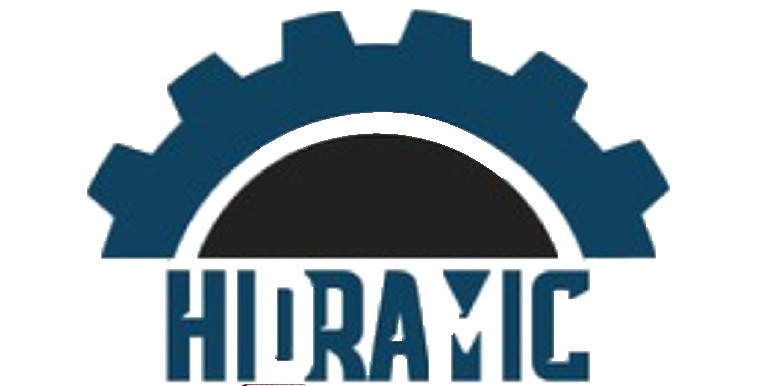

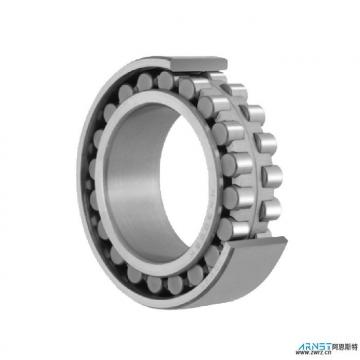 CRBH12025AUU Crossed Roller Bearing
CRBH12025AUU Crossed Roller Bearing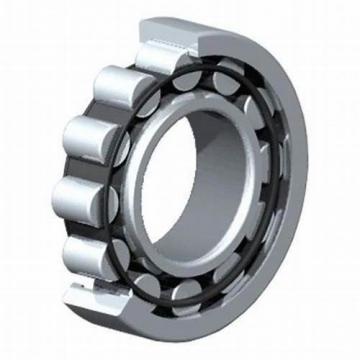 CRBH14025AUU Crossed Roller Bearing
CRBH14025AUU Crossed Roller Bearing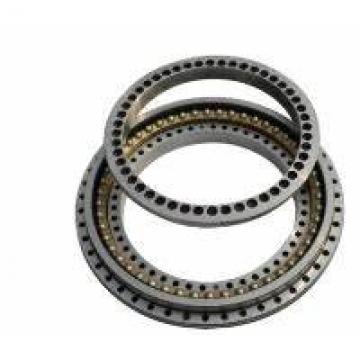 CRBH8016A Crossed roller bearing
CRBH8016A Crossed roller bearing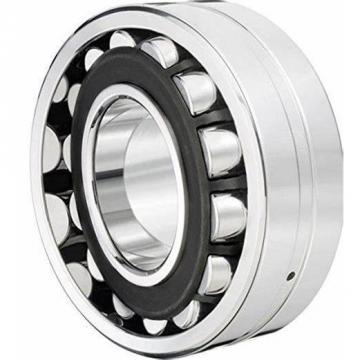 CRBH9016A Crossed roller bearing
CRBH9016A Crossed roller bearing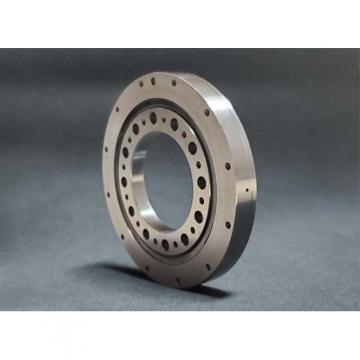 CRBH13025AUU Crossed Roller Bearing
CRBH13025AUU Crossed Roller Bearing